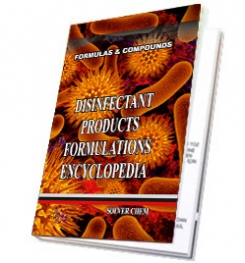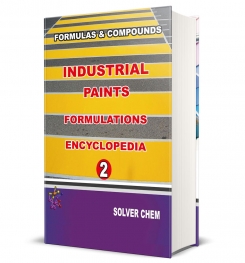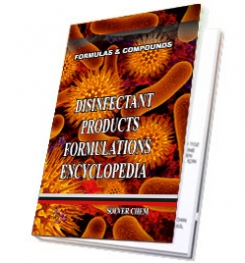Glutaraldehyde is used most commonly as a high-level disinfectant for medical
equipment such as endoscopes spirometry tubing, dialyzers transducers, anesthesia and respiratory therapy equipment hemodialysis proportioning and dialysate delivery systems and reuse of laparoscopic disposable plastic trocars. Glutaraldehyde is noncorrosive to metal and does not damage lensed instruments, rubber. or plastics. Glutaraldehyde should not be used for cleaning noncritical surfaces because it is too toxic and expensive.
Colitis believed caused by glutaraldehyde exposure from residual disinfecting solution in endoscope solution channels has been reported and is preventable by careful endoscope rinsing. One study found that residual glutaraldehyde levels were higher and more variable after manual disinfection (<0.2 mg/L to 159.5 mg/L) than after automatic disinfection (0.2–6.3 mg/L)631. Similarly, keratopathy and corneal decompensation were caused by ophthalmic instruments that were inadequately rinsed after soaking in 2% glutaraldehyde.
Healthcare personnel can be exposed to elevated levels of glutaraldehyde vapor when equipment is processed in poorly ventilated rooms, when spills occur, when glutaraldehyde solutions are activated or changed or when open immersion baths are used. Acute or chronic exposure can result in skin irritation or dermatitis, mucous membrane irritation (eye, nose, mouth), or pulmonary symptoms. Epistaxis, allergic contact dermatitis, asthma, and rhinitis also have been reported in healthcare workers exposed to glutaraldehyde.
Glutaraldehyde exposure should be monitored to ensure a safe work environment. Testing can be done by four techniques: a silica gel tube/gas chromatography with a flame ionization detector, dinitrophenylhydrazine (DNPH)-impregnated filter cassette/high-performance liquid chromatography (HPLC) with an ultraviolet (UV) detector, a passive badge/HPLC, or a handheld glutaraldehyde air monitor. The silica gel tube and the DNPH-impregnated cassette are suitable for monitoring the 0.05 ppm ceiling limit. The passive badge, with a 0.02 ppm limit of detection, is considered marginal at the Americal Council of Governmental Industrial Hygienists (ACGIH) ceiling level. The ceiling level is considered too close to the glutaraldehyde meter's 0.03 ppm limit of detection to provide confidence in the readings. ACGIH does not require a specific monitoring schedule for glutaraldehyde; however, a monitoring schedule is needed to ensure the level is less than the ceiling limit. For example, monitoring should be done initially to determine glutaraldehyde levels, after procedural or equipment changes, and in response to worker complaints. In the absence of an OSHA permissible exposure limit, if the glutaraldehyde level is higher than the ACGIH ceiling limit of 0.05 ppm, corrective action and repeat monitoring would be prudent.
Engineering and work-practice controls that can be used to resolve these problems include ducted exhaust hoods, air systems that provide 7–15 air exchanges per hour, ductless fume hoods with absorbents for the glutaraldehyde vapor, tight-fitting lids on immersion baths, personal protection (e.g., nitrile or butyl rubber gloves but not natural latex gloves, goggles) to minimize skin or mucous membrane contact, and automated endoscope processors. If engineering controls fail to maintain levels below the ceiling limit, institutions can consider the use of respirators (e.g., a half-face respirator with organic vapor cartridge or a type "C" supplied air respirator with a full facepiece operated in a positive pressure mode). In general, engineering controls are preferred over work-practice and administrative controls because they do not require active participation by the health-care worker. Even though enforcement of the OSHA ceiling limit was suspended in 1993 by the U.S. Court of Appeals limiting employee exposure to 0.05 ppm (according to ACGIH) is prudent because, at this level, glutaraldehyde can irritate the eyes, throat, and nose. If glutaraldehyde disposal through the sanitary sewer system is restricted, sodium bisulfate can be used to neutralize the glutaraldehyde and make it safe for disposal.
AND
PRODUCTION PROCESS

|
|

|
|

|
|

